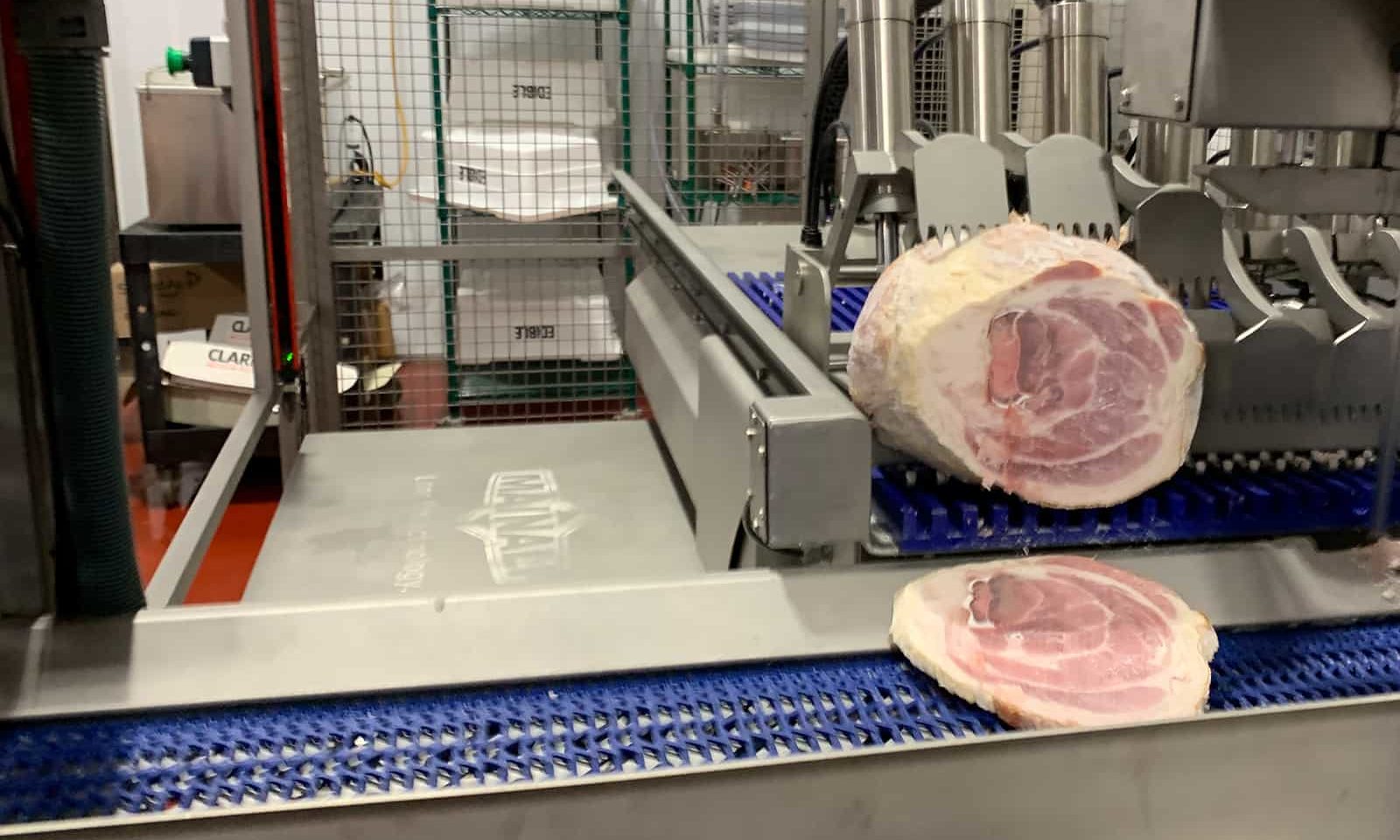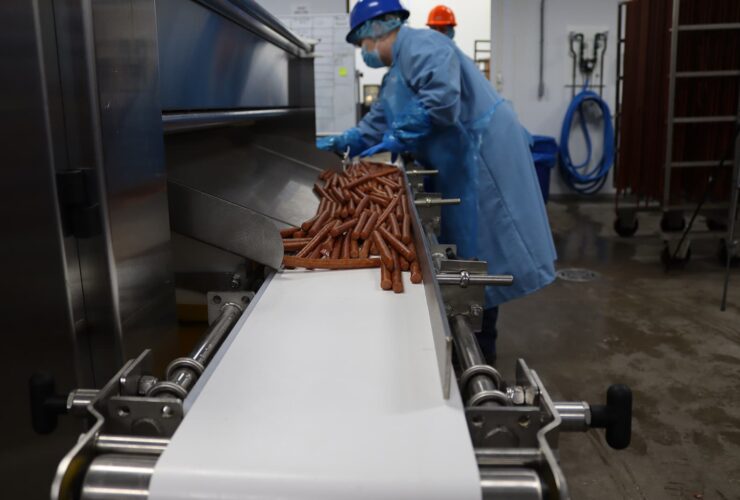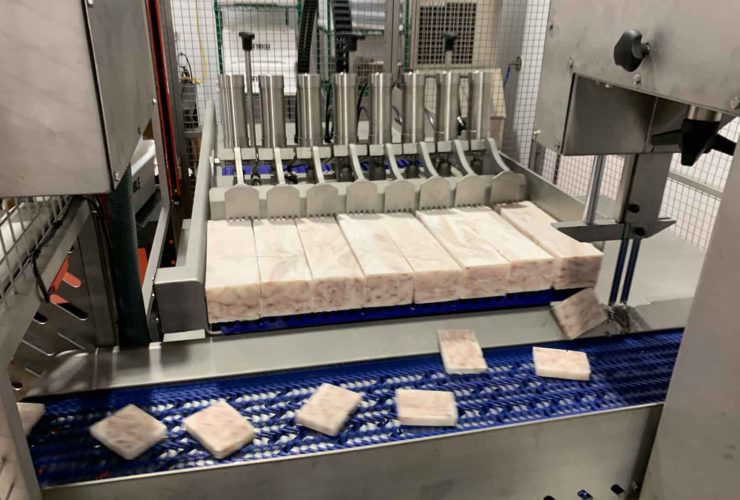Cutting meat with a band saw can be extremely dangerous.
Every year, 4,000 meat band saw-related amputations take place in the meatpacking industry. These injuries can be avoided through the right safety measures.
According to one study at Emory University, employees in this industry have a 60% higher probability of severe workplace-related injuries compared to those in other fields.
Aside from the injuries incurred, this also results in higher rates of:
- missed time from work
- medical costs
- rehabilitation costs
- Workers’ Comp costs
- liability insurance increases,
- OSHA fines
- and outrageous legal costs for hearings and depositions.
In short, the risks involved with operating meat band saws are significant.
The Dangers of Meat Band Saws
Amputations occur when an operator’s body comes into contact with the band saw blade while feeding meat into the band saw.
From 2007-2017, there were 218 OSHA-reported amputations from meat band saws. However, this number is skewed– as many accidents on meat band saws are filed away as “Worker’s Comp” injuries when reported to OSHA.
Some of the most common causes of amputation related to meat band saws include:
- The operator’s hand slipping off the meat and accidentally going through the blade
- The operator attempting to remove meat from the band saw table while the blade is still in motion
- The operator’s gloves, accessories, or clothing becoming entangled in the saw blade
The most severe complications of meat band saw injuries involve blood loss.
If a band saw blade cuts through the radial and ulnar arteries, found in the forearm, wrist, and hands, the high-pressure bleed can lead to significant blood loss in just a matter of seconds.
This can result in Hypovolemic shock, a condition that occurs when you lose more than one-fifth of your body’s blood, leading to organ failure.
Exsanguination, the most extreme form of hemorrhage, can also occur when you lose 40 percent or more of your body’s blood or fluid supply. This can be fatal if the bleeding isn’t stopped in time.
Some reports even suggest that death can occur within five minutes of injury if blood loss isn’t addressed.
Safety First
Fortunately, there are steps that can be taken to reduce band saw-related injuries from occurring in the first place. From procedure to an operator to equipment, several safety protocols can greatly reduce this workplace injury.
Provide adequate training
Safety starts with the operator. Develop and implement safe operating procedures for meat-cutting band saws and train every operator on those procedures. We recommend the following lessons:
- Check and adjust all guards prior to use
- Use a pushing guard to feed small pieces of meat into the blade
- Do NOT wear jewelry or loose-fitting clothes while operating the saw
- Secure long hair in a net or cap
Guard the entire blade
Install a guard over the entire blade, except the working portion or point of operation of the blade. The guard must be adjustable to cover the unused portion of the blade above the meat during cutting operations.
Use a pushing guard
When feeding smaller pieces of meat into the blade, operators should use a pushing guard — something that allows them to push the meat into the saw without their hands coming too close to the moving blade.
Ensure the blade is sharp and tensioned
It may seem counter-intuitive, but a sharper blade is a safer blade because a sharper blade will cut through the meat without the need for excessive pushing and without kicking the meat back at the operator. Review the manufacturer’s guidelines for blade sharpness and tension to ensure the blade doesn’t break while in use.
Ensure the blade stops before removing meat
Never try to remove meat from the work area while the band is still moving. Allow the blade to come to a full stop to ensure that no trips or slips will cause hands to come in contact with a moving blade.
Use a vision or contact-sensing system
Many newer band saws can be equipped with vision or contact-sensing systems that kill power to the machine when an operator’s hands get too close to the blade. Such systems allow the blade to be stopped within milliseconds once the system is triggered, saving operators from serious injuries.
Go Automatic
A new breed of automatic band saws has hit the market and is drastically reducing the number of injuries caused by conventional, hand-fed band saws.
The reason behind the safety improvement is simple: operators’ hands never come close to the moving blade.
These automatic band saws are designed with a moving table that feeds meat into the saw blade. Operators simply need to load the product onto the table, set the cutting parameters on the touch screen, and watch as the band saw does the work of cutting the meat product.
Safety gates, vision shields, and automatic shut-offs reduce the chances of an operator even coming close to the blade while in operation.
Creating a Safe Meat Plant
The bottom line is that meat plant operations can be very dangerous and even fatal to workers when it comes to band saw use.
Improving the safety of equipment use for meat band saw operators is the first step to creating a safer meat plant, overall. Following the above guidelines will help to ensure minimal risk of injury to your operators, as well as prevent unnecessary associated costs at your plant.




